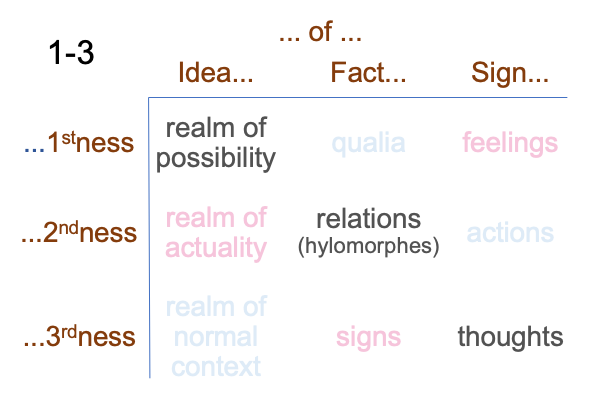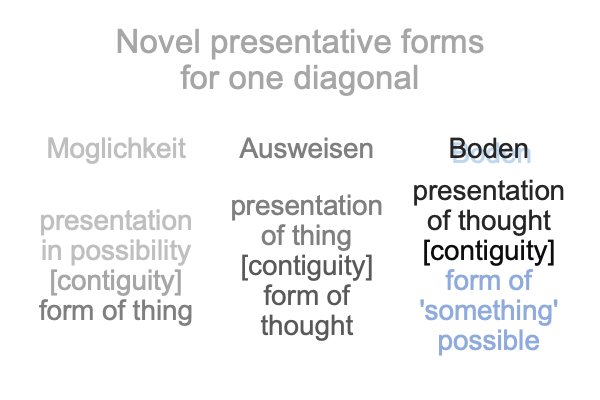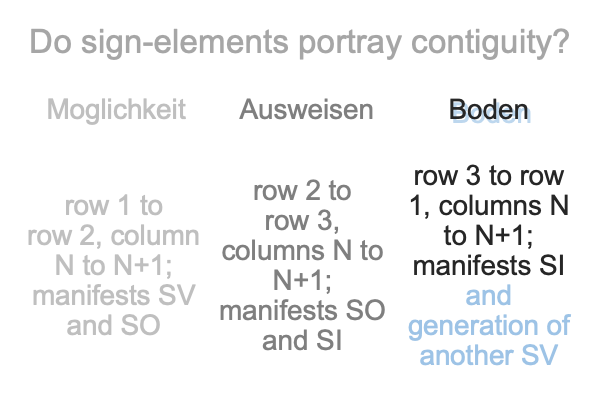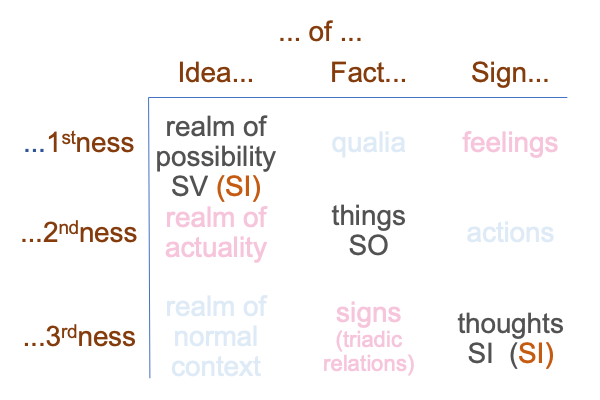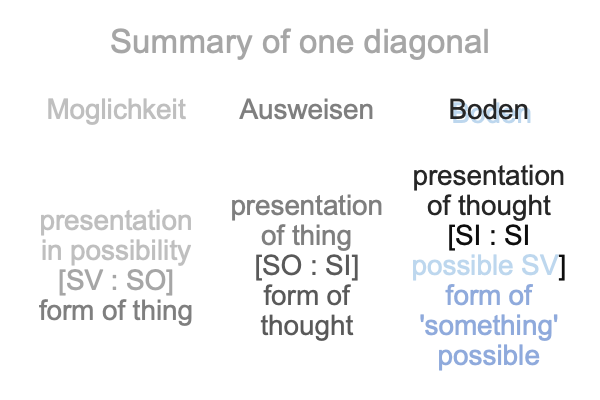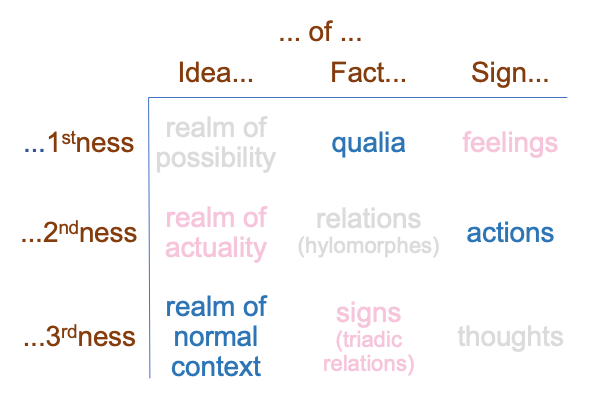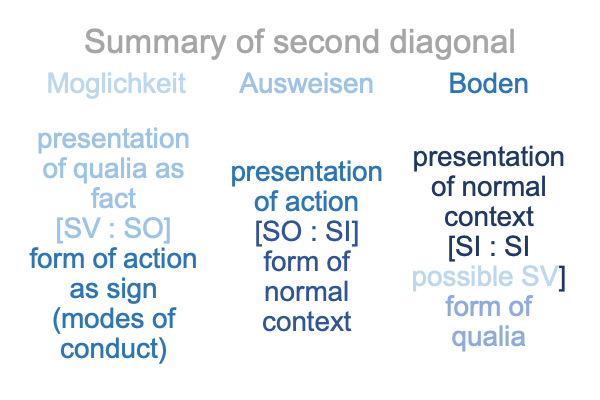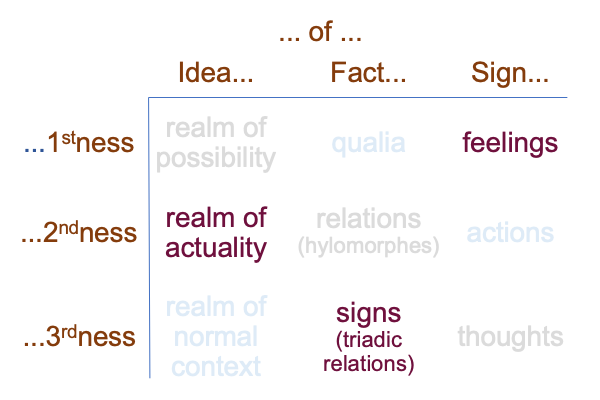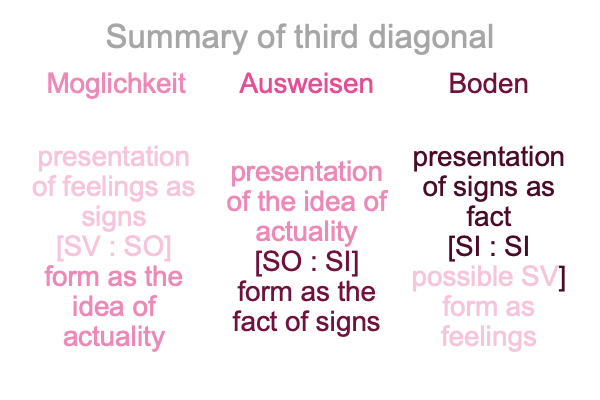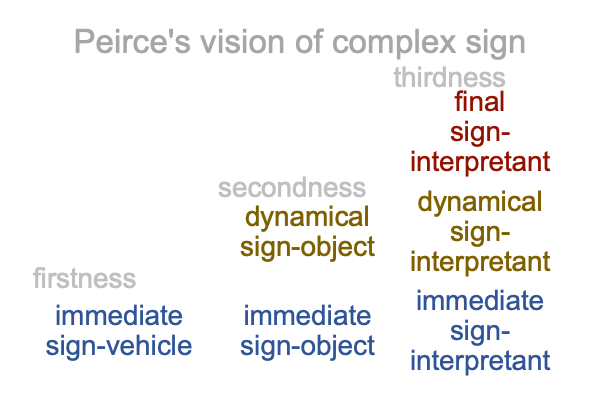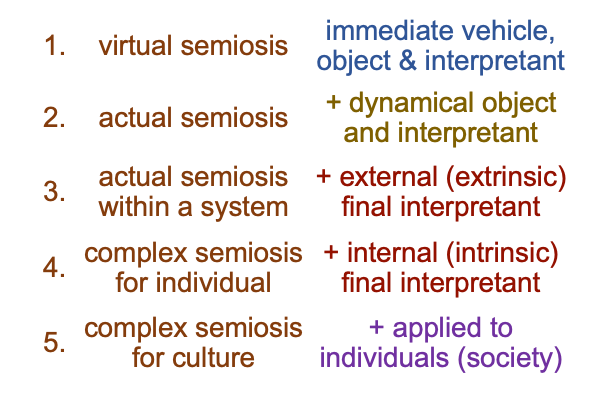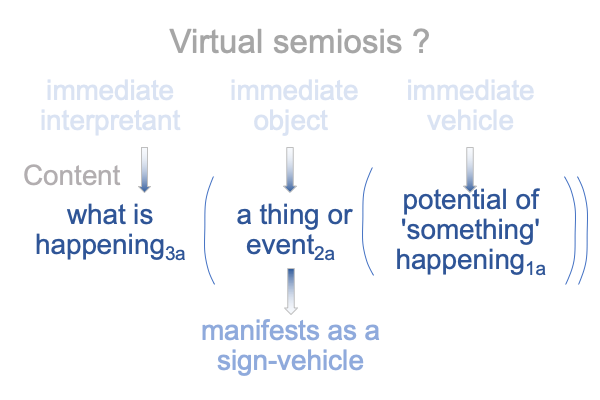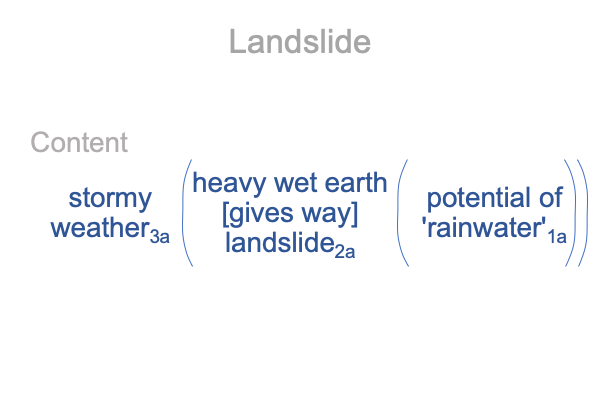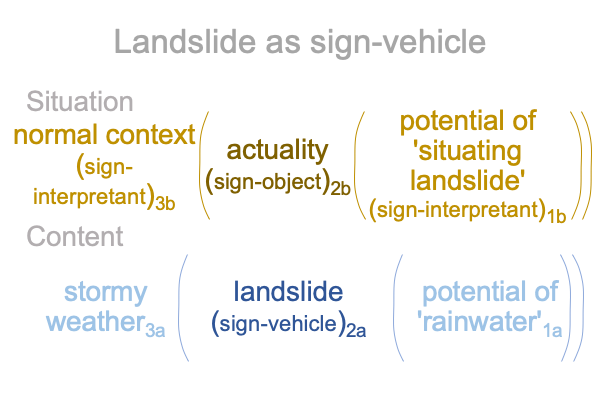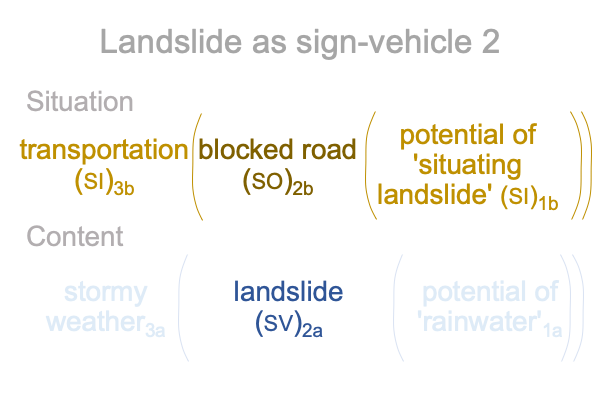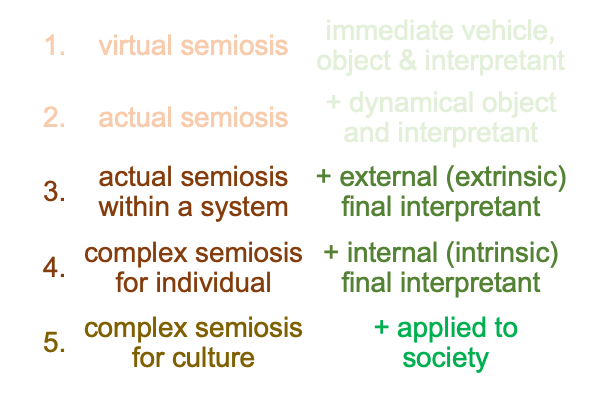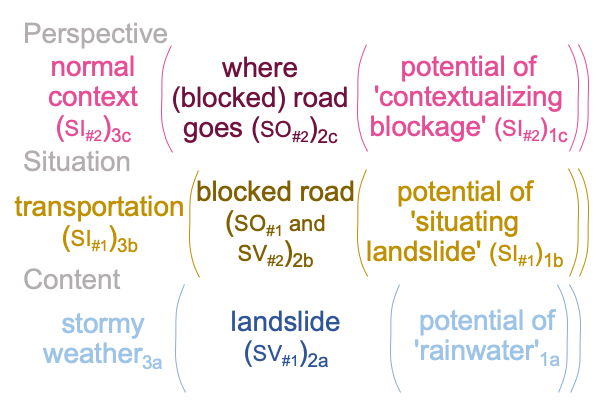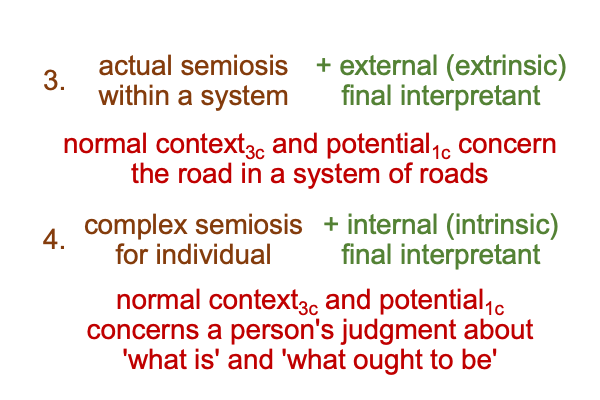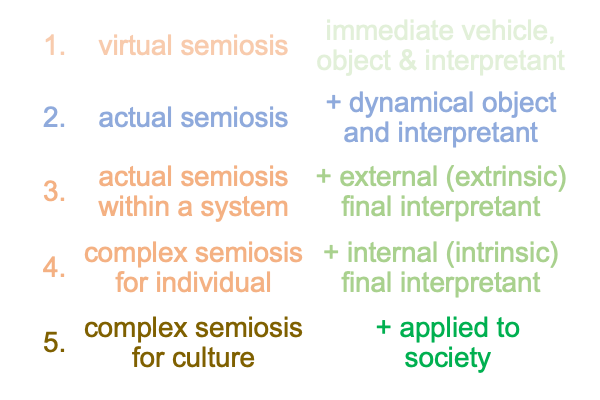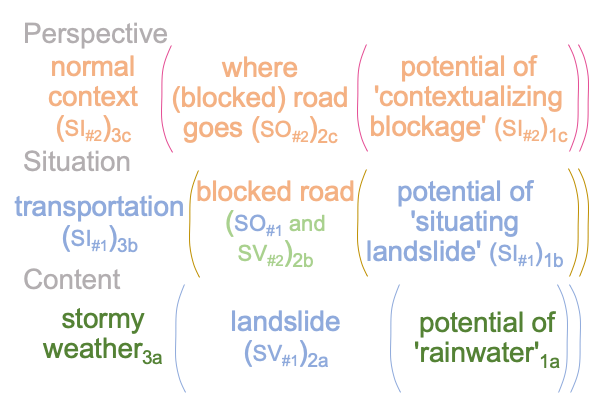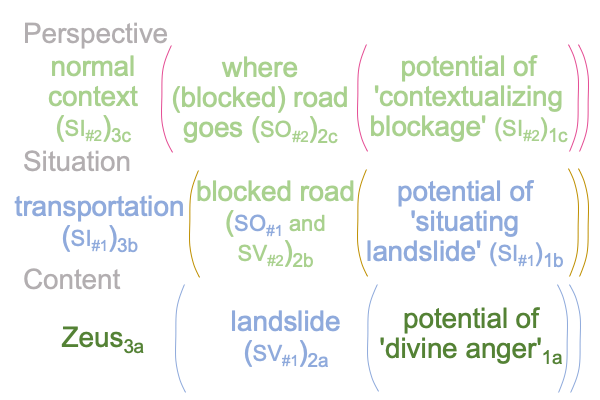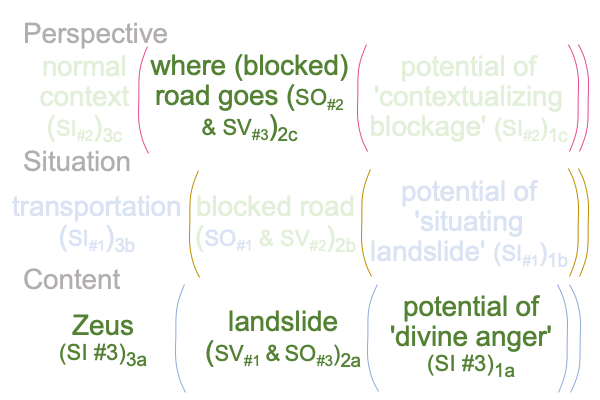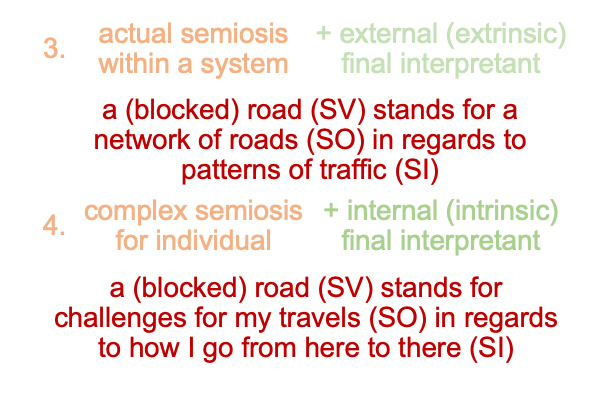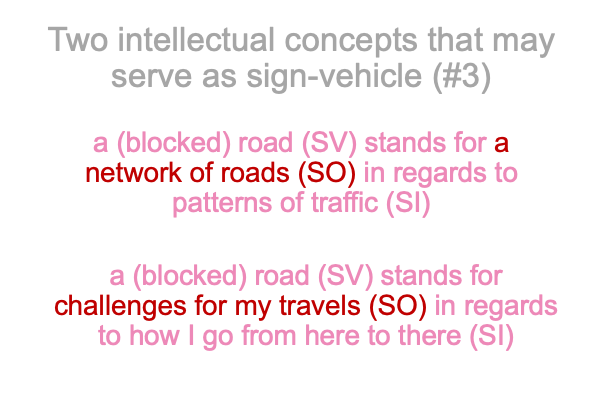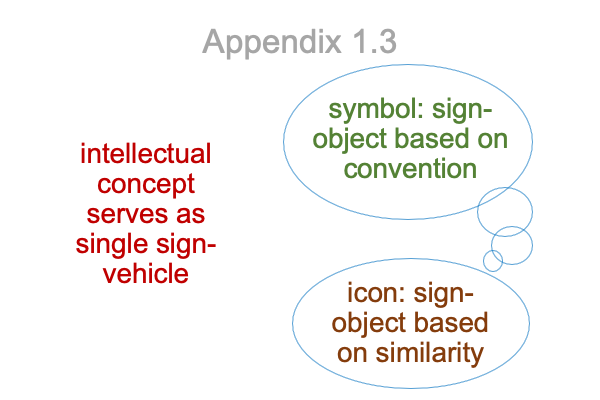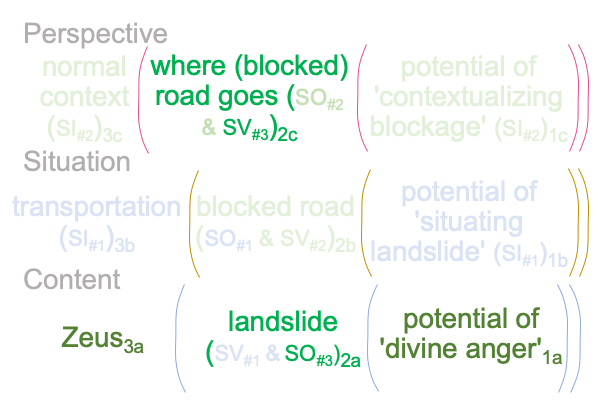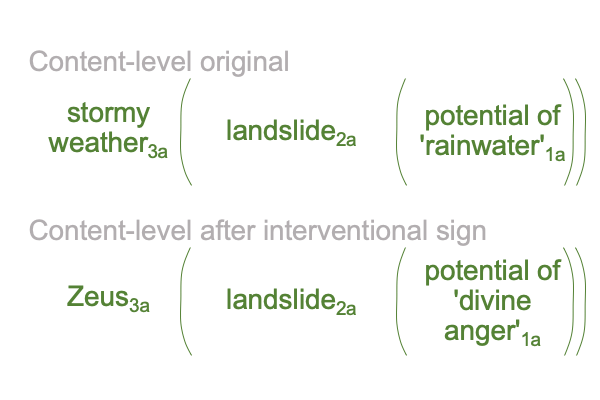Looking at Appendix 1.1 in Brian Kemple’s Book (2019) “The Intersection” (Part 3 of 18)
0043 Okay, allow me to explore the most obvious diagonal.
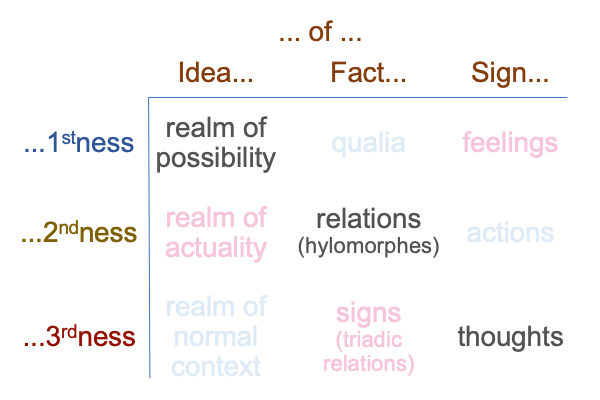
0044 Consider ‘something’ in the realm of possibility [substantiates] the form of a hylomorphic relation. According to the hypothesis on grounding transcendence, the novel presentative form is ‘something’ possible [substantiates] a thing. An idea in firstness causes (or is contiguous with) the facts of a cause-and-effect relation. Element (column 1, row 1) substantiates element (column 2, row 2).
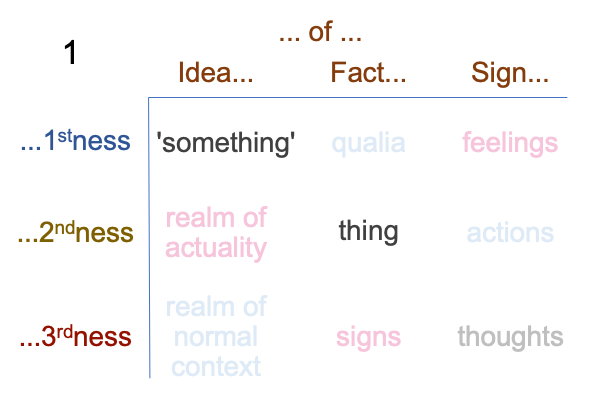
0045 Does this capture Heidegger’s use of the German term, Moglichkeit (translated into English as “possibility”)?
Yes, Moglichkeit applies when ‘something’ in the realm of possibility serves as grounds for a cause-and-effect fact.
‘Something’ presents itself as a thing.
Okay, that sounds plausible.
0046 Let me consider the next novel presentative form.
Consider hylomorphic relations [substantiate] thoughts. A fact of secondness grounds a sign of thirdness. The thing is like matter. The thought is like form. Element (column 2, row 2) substantiates element (column 3, row 3).
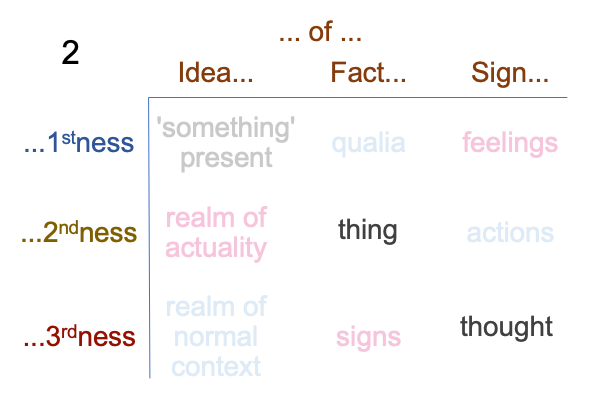
Facts of secondness [substantiate] signs of thirdness. Things [substantiate] thoughts.
0047 Does this capture Heidegger’s use of the German term, Ausweisen (previously rendered as “account” and now translated by Kemple into “pointing out”)?
A thing has significance.
Okay, here are two successes in a row. But, the trend is making me nervous.
The form of the first movement, presents itself as a fact and that presentation substantiates a sign in the realm of thirdness,corresponding to a thought.
I am afraid that this trend will end up as a tortuous run-on sentence.
0048 One more step.
Consider thoughts [substantiate] ‘something’ in the realm of possibility. A sign of thirdness grounds an idea of firstness. Thoughts are like matter. ‘Something’ in the realm of possibility is like form.
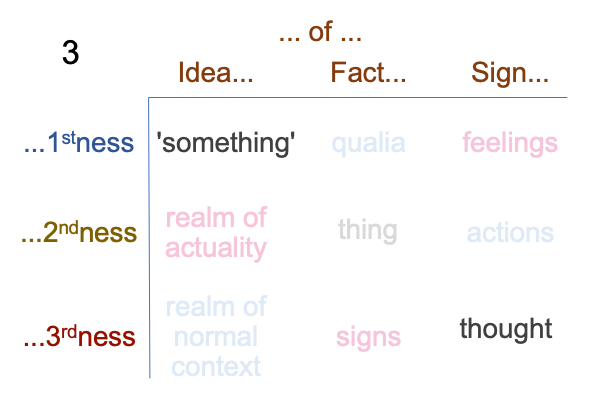
0049 Does this capture Heidegger’s use of the German term, Boden (previously translated as “basis” and now translated by Kemple as “surroundedness”)?
Is the originating ‘something’ in the realm of possibility subsumed into a form that is substantiated by a thought?
Okay, I am not nervous anymore.
I am perplexed, yet intrigued.
0050 Of course, the questionable character of the following hypothesis cannot be doubted.
Otherwise, I could present the following claims as fiat accompli.
First, presentative forms in the table in Appendix 1.1 are hylomorphes, where the column conveys experience (form) and the row represents appearance (presentative).
Second, presentative forms may contribute to a novel presentative form, corresponding to Heidegger’s grounding of transcendence.
Third, tabular presentative forms that cross adjacent categories constitute a grounding of transcendence. This is a hypothesis.
In other words, the grounding of transcendence follows diagonals within Kemple’s table of presentative forms.
0051 What transitions do Moglichkeit, Ausweisen and Boden correspond to?
How about passages from idea to fact, fact to sign, and sign to idea?
Another option is firstness to secondness, secondness to thirdness and thirdness to firstness.
One more option is that both passages are implicated.
0052 In section 6.3.1, Kemple notes that Peirce’s categories and Heidegger’s groundings do not map onto one another perfectly. Peirce’s categories pertain to semiosis. Heidegger’s labels are contained within a framework of ontic-ontological transcendent grounds that are specific to human beings.
0053 So far, my associations to Kemple’s appendix 1.1 yields a hypothesis and a challenge.
The hypothesis is that Maritain’s presentative forms and Heidegger’s grounding of transcendence coincide with the construction of novel presenative forms, composed of presentative forms. A tabular element in one categorysubstantiates the tabular element in the adjacent higher category, for both columns and rows, with a wrap-around at thirdness.
The result is three sequences of three transitions, depicted in colors in the above table.
0054 If this result is plausible, the elements in the table are not only presentative forms, but they are also elements in a novel hylomorphic structure: presentative (column A, row B) [substantiates] form (column A+1, row B+1).
Heidegger’s terms seem to jive with these novel presentative forms.
0055 Is that confusing? If so, then I wonder.
Does Moglichkeit (possibility) start with the column of idea or with the row of firstness?

